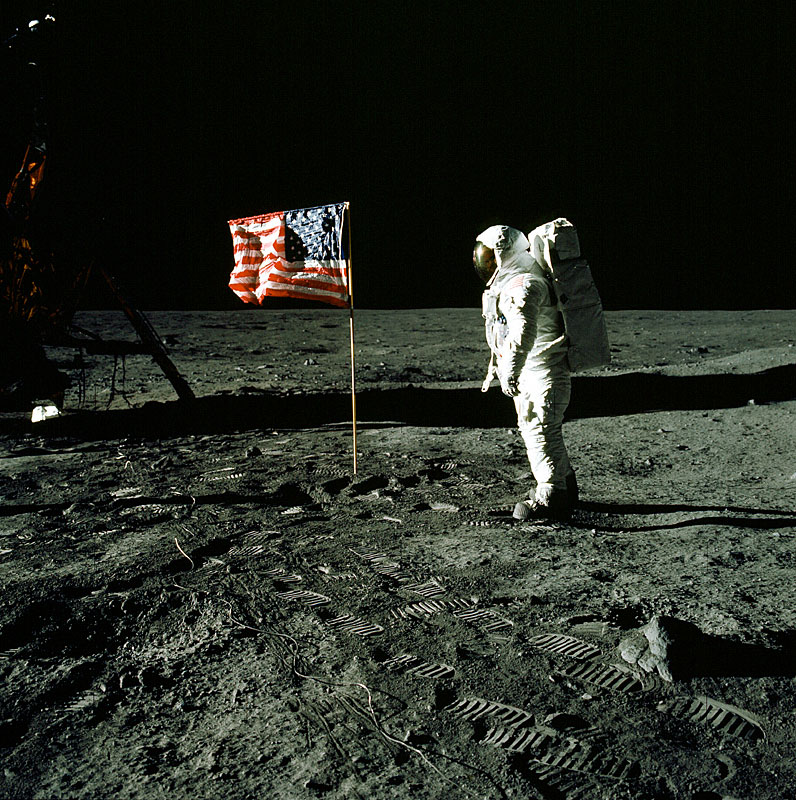What the Heck Is This?

This is a super-duper close-up of a very famous image. You might easily guess the iconic item shown in the close-up, based on the pattern, but can you guess its context?
Hint: Today (May 25) is a very special anniversary.
No ideas? Read on …
Fifty years ago today, President John F. Kennedy challenged NASA and the nation to put a man on the moon and return him safely to Earth before the end of the 1960s.
The photo, full version below, is the result of that challenge. It's the U.S. flag on the moon, with Buzz Aldrin standing next to it during the Apollo 11 mission in 1969. Because there is no wind on the moon, a rod was used to hold the flag horizontal, but the rod didn't extend fully, so the flag ended up a bit wavy, making it look windblown (See the other image below of the sketch that hatched this idea).
Great effect, except ...
The wavy flag, along with other perceived inconsistencies, fueled belief among conspiracy theorists that the moon landings were faked. If you don't believe we went there, just ask Buzz. In 2002, way before the moonwalker did "Dancing with the Stars," conspiracy theorist Bart Sibrel called him a "coward and a liar" for faking the events. Aldrin, 72 at the time, punched Sibrel in the jaw.
Get the world’s most fascinating discoveries delivered straight to your inbox.
Got a strange or interesting photo related to science, nature or technology? What the Heck, send it to me and maybe I'll use it. And you follow me on Twitter or Facebook.
Robert is an independent health and science journalist and writer based in Phoenix, Arizona. He is a former editor-in-chief of Live Science with over 20 years of experience as a reporter and editor. He has worked on websites such as Space.com and Tom's Guide, and is a contributor on Medium, covering how we age and how to optimize the mind and body through time. He has a journalism degree from Humboldt State University in California.



